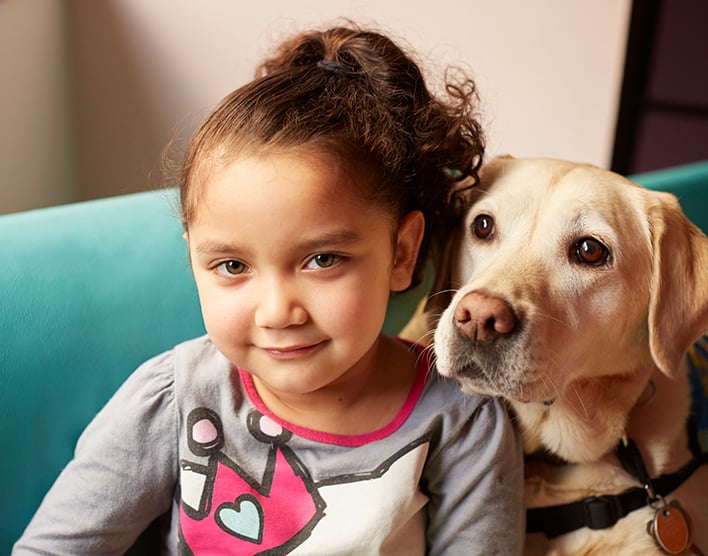Tender wagging care
Our therapy dogs spread joy and smiles at the bedside and throughout the hospital.
Visit Child Life services

Microtia, meaning "small ear," is a birth defect of the outer ear. The defect varies in severity, from an ear that's slightly small to complete absence of the outer ear. It can be unilateral (affecting one ear only) or bilateral (affecting both ears). In unilateral microtia, the right ear is typically the one with the defect.
Children with microtia may also have defects of the middle ear structures, which can be diagnosed by CT scans. In severe cases, the ear canal is usually closed, which is called ear canal atresia. In children with ear canal atresia, hearing in the affected ear is severely reduced.
Microtia is found in one out of every 8,000 to 10,000 newborns. It can occur alone or as part of a syndrome that causes other defects, such as hemifacial microsomia. The cause of microtia is unknown.
Microtia is diagnosed based on its physical characteristics. The condition is graded according to its severity, with one being the least affected to three being the most affected, with most of the external ear missing.
Within your child's first year we will perform hearing tests every six months, especially if your child has ear infections. Children who have conductive hearing loss in the unaffected ear should be seen by an otolaryngologist (an ear, nose and throat doctor) as soon as possible to determine if PE tubes are needed. These are small tubes that are surgically placed into the eardrum to equalize pressure and aerate the middle ear, which helps prevent further infections and hearing loss.
Babies at risk for hearing loss should be enrolled in an Early Intervention Program during infancy. These programs are provided by regional centers and local education agencies throughout California. They offer services that support the development of infants and toddlers with special needs, such as audiology services, speech and language services, and physical and occupational therapy. Children may need hearing aids, especially if both ears are affected.
Children will receive routine tests at birth, including an ultrasound of the kidneys to rule out kidney abnormalities, which are sometimes found in children with microtia.
Microtia can be associated with an asymmetrical jaw, and if that is the case, we recommend X-rays of the cervical spine (neck) to rule out fusions or other abnormalities that may restrict head movements. For children who have snoring or breathing difficulties, we recommend an evaluation in a pulmonology clinic and a sleep study if needed, to rule out sleep apnea.
Reconstruction of the external ear involves three to four surgeries, usually performed several months apart. The surgical procedures generally begin around 7 to 8 years of age, when the ear is 90 percent of its adult size, making it easier to determine the size of the ear that must be made.
The first surgery includes harvesting the rib cartilage and using it to construct the helix, the curved rim of the top of the external ear. For this procedure children usually need to stay in the hospital for three days.
The next surgery, to attach the ear lobe, which is almost always present, takes place about four months after the first surgery. The third surgery, four to six months later, involves lifting the ear off the scalp so it stands out normally. A fourth procedure is sometimes needed for minor refinements.
A CT scan will indicate if the middle ear structures are normal, which is a requirement for ear canal reconstruction. If your child is a candidate for that procedure, this surgery will be coordinated with the surgeries to reconstruct the external ear.
UCSF Benioff Children's Hospitals medical specialists have reviewed this information. It is for educational purposes only and is not intended to replace the advice of your child's doctor or other health care provider. We encourage you to discuss any questions or concerns you may have with your child's provider.

Ranked among the nation's best in 11 specialties
Tender wagging care
